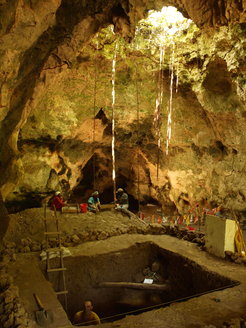Prehistoric Loss of Biodiversity
Scientists explore the role of climate change and ancient human activity in the disappearance of Zanzibar’s large fauna

The senior author of the new study is University of Oxford archaeologist Nicole Boivin, who is also the newly appointed director at the Max Planck Institute for the Science of Human History, in Jena, Germany. The study is an outcome of the European Research Council-funded Sealinks Project.
The study provides new insight into processes of extirpation and extinction that followed prehistoric human colonisation of islands globally. "While more work is needed to untangle the human and natural contributions to faunal extirpations on Zanzibar, this is an important step toward better understanding of the ways that humans have shaped the natural world over the long term," says Dr. Boivin.
The researchers from the UK, Spain, France, Kenya, Thailand and Australia compared archaeological data on the history of Zanzibar’s fauna with geographical data obtained by looking at mangrove sediments and simulating sea level rise. The faunal remains were all excavated from Kuumbi Cave, a famous archaeological site that not only documents wildlife changes but also human activities over the long term.
The study covers five periods of time – two stages of the late last Ice Age when Zanzibar was still part of the African mainland, the time of rapid sea level rising as the world subsequently warmed, and the Middle and Late Iron Age after Zanzibar had become an island. During the two latest stages, farmers and herders arrived on the island and brought further changes. The researchers were able to show that over this period, numerous large mammals such as zebra, buffalo, waterbuck and gazelle disappeared from the cave’s faunal record. Cut marks on some bones show that these were hunted by humans, though more work is needed to understand the exact role humans played in their disappearance.
The lead author of the study, Dr. Mary Prendergast from St. Louis University in Madrid observes that "This is a unique case study for understanding land-bridge island formation and human occupation and their long-term effects on animal communities. Such broad perspectives on island formation and defaunation provide insights that can help with efforts to conserve island biodiversity today."
